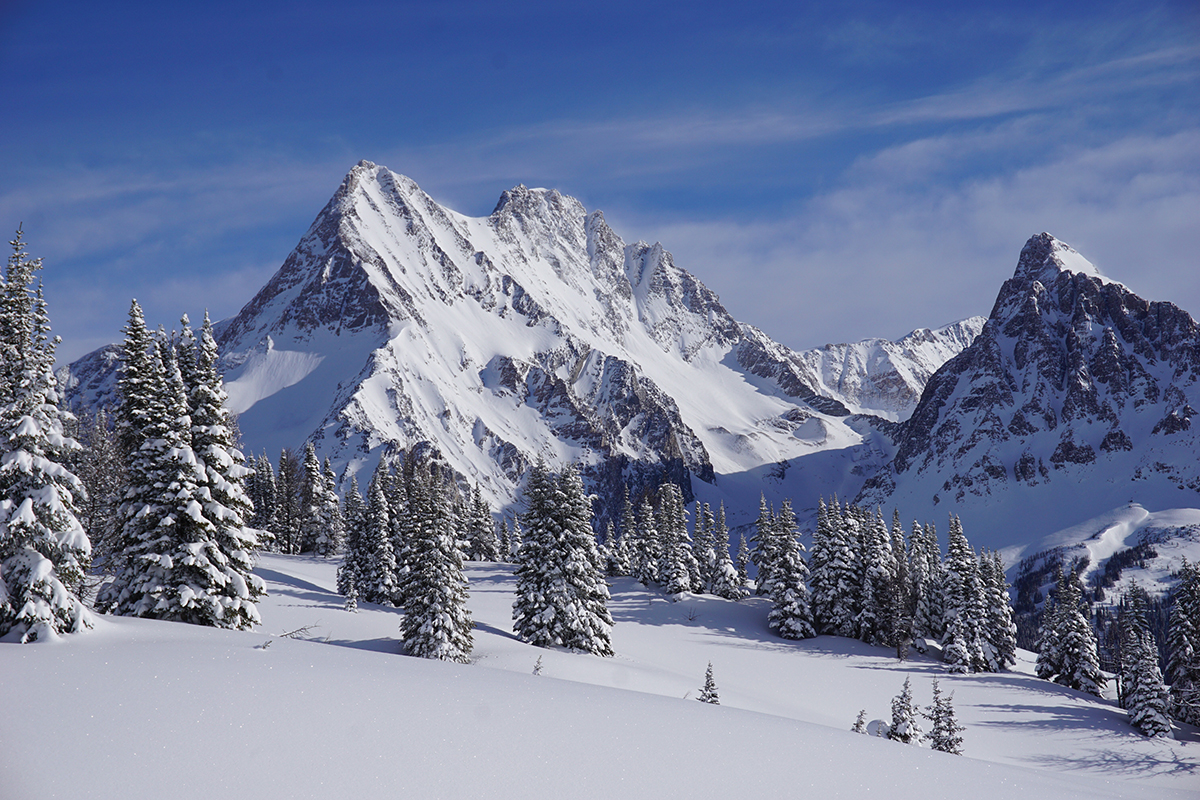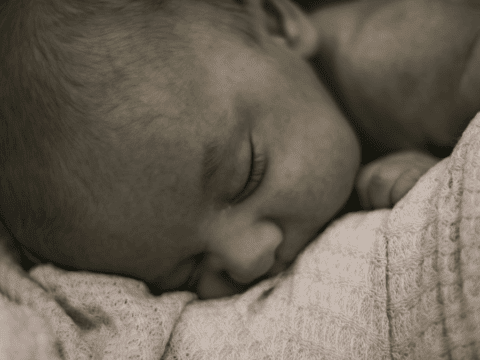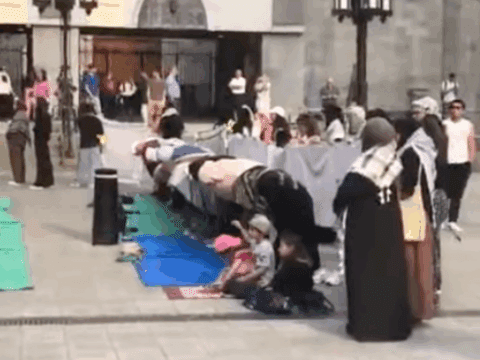Four months ago, Rev. Greg Powell left his cozy home in southeastern British Columbia and flew to the Supreme Court of Canada in Ottawa. He’d previously lived in Canada’s capital for more than a decade but had never entered the imposing building. He thought of it as “the bedrock of institutionalized Canada.” Pomp, formality, security — all things that make the now-chair of Kootenay Presbytery uncomfortable.
But on Dec. 1, he passed through the courthouse’s ornate bronze doors on behalf of his Presbytery; he was one of 18 interveners in a case that pits a B.C. First Nation against ski resort developers and the B.C. Ministry of Forests, Lands and Natural Resource Operations. During the one-day hearing, the justices would consider a written submission co-authored by Presbytery and other groups in support of the Ktunaxa First Nation.
You may unsubscribe from any of our newsletters at any time.
For Powell, his presence in court that day was an act of reconciliation and justice. Since 1991, a cast of environmentalists, biologists, community activists, local politicians and the Ktunaxa (pronounced k-too-nah-ha) have attempted to stop the development of the Jumbo Glacier Resort in the midst of the soaring Purcell Mountains. But all scientific, ethical and economic arguments — delivered in consultations, reviews and environmental assessments — have failed to stop the proposed 6,250-bed, 110-hectare resort. In 2012, the developer signed an agreement with the B.C. government to build the attraction on Crown land, just west of the Rockies and a 420-kilometre drive from Powell’s congregation at Castlegar United.
The Ktunaxa consider this region to be sacred. Qat’muk, their name for the territory (which includes the proposed resort site), is where their creation story takes place. It’s the refuge of the Grizzly Bear Spirit — a key intercessor between this world and the other. If the resort is built, the Ktunaxa argue, the spirit will leave, with devastating effects on their people.
So the introverted, generally non-litigious First Nation brought this case to the B.C. Supreme Court, the B.C. Court of Appeal and now the Supreme Court of Canada, making it the first time the nation’s top court has determined the merits of an Indigenous religious freedom claim under Canada’s Charter of Rights and Freedoms.
The overarching questions before the courts have been complex: Does a group of people genuinely believe in a Grizzly Bear Spirit who would leave if a resort were built in its territory? (The B.C. Supreme Court said yes.) Did the government violate the Ktunaxa’s charter right to freedom of religion by approving the development? (Both B.C. courts said no. The Supreme Court of Canada is now reconsidering this question.) And if the right was violated, can the resort developer reasonably accommodate the Ktunaxa’s belief? Overall, how should courts interpret the charter’s promise of religious freedom in contentious land-use decisions?
The justices’ decision is expected sometime this spring.
The lawyer representing the Ktunaxa, Peter Grant, was raised Catholic and compares the resort proposal to building a Disneyworld over top of the towering Saint Joseph’s Oratory in Montreal. “People would be outraged because it’s a place of spiritual importance,” he says. “We’ve denied Aboriginal spirituality for over 100 years. This is the opportunity to change that.”
Grant describes the court challenge as “one of the most important cases in Canadian history if we are seeking reconciliation with the Aboriginal peoples of Canada.”
He should know. For the past 30 years, the Vancouver-based lawyer has been counsel on the winning side for many of Canada’s most prominent First Nations rights cases: the first residential school lawsuit; the national settlement on residential schools; hunting and fishing rights; land title in British Columbia; and much more.
To call this a high-stakes case is an understatement. If the Ktunaxa win, other First Nations will have a legal precedent that will require governments to weigh the importance of their sacred practices and land against development. If they lose, they’ll watch as more and more of their sacred places are desecrated — theme parks will be built over their cathedrals.
Run your hand along the rough red-brick walls in the basement of the St. Eugene Golf Resort and Casino. Imagine 5,000 small brown hands once doing the same thing. From 1912 to 1970, the building was a Catholic-run residential school.
Outside, just a few metres from the steaming hot tub, is the school’s graveyard, a thick forest of white crosses on a white field of snow. Inside, several teams of peewee hockey players and their parents are checking in, talking about dinner.
The Ktunaxa own this building now. It’s one of the B.C. nation’s most successful economic development projects, with a golf course, four restaurants and the province’s only Aboriginal-owned casino. As former chief Chris Luke Sr. explains, cleansing ceremonies before and after the renovation convinced the ghosts to leave. But the haunting feeling remains.
For six decades, Ktunaxa children lived and learned here. Their parents and grandparents — descendants of nomads — were settled on reserves. Starting in 1884, an amendment to the Indian Act prohibited potlaches. Later amendments banned other Indigenous religious ceremonies.
It’s in this context that Chris Luke Sr. lays out his conditions for being interviewed. Sure, the former Ktunaxa chief will agree to talk. But he’s not going to talk about his spirituality.
The former St. Eugene’s resident has already exposed far more of himself and his relationship with the divine than he’d ever imagined doing. In consultations and at the B.C. Supreme Court in 2014 and the B.C. Court of Appeal in 2015, and now at the Supreme Court of Canada, he has argued that the provincial government hadn’t fully considered the spiritual costs of the Jumbo Glacier project when bureaucrats approved it. As much as the Ktunaxa are resilient, they’re also intensely private as a nation. There’s a reason, Luke says, that they weren’t in a hurry to draw their spirituality into the development discussion — until they had to.
“For each and every one of us, [spirituality] is what you might call a God-given gift,” he says. “It’s something that belongs to that person. You don’t give it away. You don’t talk about it.”
But after a heart attack in 2009, Luke had an epiphany. He stepped into the Jumbo Glacier Resort cacophony with a clear message: Qat’muk is sacred. The land is critically important to the spiritual survival of his people. No permanent residences can be built there (though non-permanent camps are welcome, as are visitors).
The next year, the nation signed the Qat’muk Declaration, which begins, “We, the Ktunaxa, have lived in our territory since time immemorial and have a deep spiritual connection to the animal world and, in particular, to the grizzly bear. . . . The Grizzly Bear Spirit is an important source of guidance, strength, protection and spirituality for the Ktunaxa.” This document was also considered in provincial courts.
It was the first time, after nearly 20 years of consultation, that the Ktunaxa had explicitly argued in public that spirituality — religion — was the core reason for their resistance to the proposed resort. Kathryn Teneese, the council chair of Ktunaxa Nation, says they waited two decades because they choose to keep their spirituality private — and had assumed that the scientists would win. They didn’t. So Luke came forward.
The developer struck back, playing up the delayed mention of the Grizzly Bear Spirit to cast doubt on the legitimacy of the Ktunaxa’s spiritual claims.
“Never before in the project’s then-20 year history had Qat’muk or the existence of a refuge area for the Grizzly Bear Spirit been mentioned,” it states on beforeqatmuk.com, a sleek website launched by Glacier Resorts Ltd. “The claim, accompanied by large public relations efforts complete with mal-informed celebrities, strained credibility.” (Jumbo Glacier Resort did not respond to requests for an interview.)
The B.C. courts didn’t give much weight to the Ktunaxa’s beliefs. The provincial Supreme Court ruled that because the Ktunaxa, who live in nearby communities, perform their religious ceremonies outside Qat’muk, a resort in that particular place wouldn’t violate their ability to practise their spirituality.
The B.C. Court of Appeal agreed that there was no violation, but for a different reason: it ruled that in this case, the First Nation could not impose its beliefs on others living in the region.

How do you explain “Grizzly Bear Spirit” to a court? Kathryn Teneese is Ktunaxa council chair as well as the lead in the B.C. and federal Supreme Court cases. From her office overlooking a snow-capped mountain range, she explains that conveying their spirituality to non-believers is a holdup in the search for justice.
In her experience, those who are religious get it, and those who aren’t, don’t.
For example, she says, lawyer Peter Grant gets it because he understands Catholicism. So does Jeffrey Huberman, an Orthodox Jewish lawyer who works in Grant’s office. The interveners in the case — Kootenay Presbytery, the Canadian Muslim Lawyers Association, the Evangelical Fellowship of Canada and others — all understand what sacred is, what spirit is, what divinity is and what codes of behaviour respect those relationships.
“I always think about that. No one from a Christian perspective questions Moses and the Ten Commandments. People who believe will never say, ‘No, that’s just a story,’” says Teneese. “We were just blown away that in [B.C.] court, the whole thing was trivialized.”
She continues, “What we’re suggesting is, you’re part of a society that has made every attempt [to crush our spirituality] since you stumbled into our territories, but you haven’t succeeded. So here we are giving you some insight, and you turn around and trivialize it. It’s obvious you don’t get it. But we have a right to our beliefs, and we should be given the same consideration as any other religion.”
Freedom of religion sounds simple on paper but gets murky in court. When there’s a conflict, no faith group automatically wins. Rather, arguments often turn on a central legal question: can this belief be reasonably accommodated? Think of turban-wearing Sikh RCMP officers or Trinity Western University’s proposal for a Christian law school that excludes sexually active lesbian and gay students. Since the charter was introduced 35 years ago, the courts have been busy applying the lofty ideal to gritty, complex Canadian life. This is no different.
If the Supreme Court rules against the Ktunaxa, it won’t be the first time that First Nations spiritual claims have been shunted aside. Rev. Raymond C. Aldred, the director of the Indigenous studies program at the Vancouver School of Theology, rattles off a handful of developments that went ahead in spite of First Nations claims to sacredness. The Diefenbaker dam in Saskatchewan. The Dakota Access Pipeline. The Arizona Snowbowl.
“Most religions in Canada agree to the secular-religious split. First Nations don’t function like that,” he says, cautioning that First Nations spiritual observances are anything but unified — though there are some unifying principles. “It’s more holistic. Basically, the land is our relative. Mother Earth cares for you, and everything we eat and wear comes from Mother Earth. When we say something is sacred, it means something powerful happened there, and might happen there again. So we want to preserve that.”
Asked how he would explain the Grizzly Bear Spirit to a court, Aldred draws a comparison. “It’s like the hijab,” he reflects. Asking faithful people to ditch their head covering or allow a ski resort in a sacred spot is asking them to significantly violate their own ethics. “How can you expect people to do that?”
Greg Powell hopes this case will draw more United Church members to embrace active reconciliation — as one religious group supporting another in its full Canadian rights to freedom of religion. “We adopted the medicine wheel as our crest. There’s a certain responsibility that goes along with that,” he says.
For Teneese, her hope lies in the big picture. The 2007 United Nations Declaration on the Rights of Indigenous Peoples, fully supported by Canada in 2016, states that “Indigenous peoples have the right to maintain and strengthen their distinctive spiritual relationship with their traditionally owned or otherwise occupied and used lands, territories, waters and coastal seas and other resources and to uphold their responsibilities to future generations in this regard.”
“That just hits it right on the head,” she says. “Canada, the U.S., New Zealand and Australia — the four biggest [colonies] — are just at a loss about what to do about it. The only way to breathe life into these [United Nations] articles is by doing it. And I believe that’s what we’re doing. Breathing life.”
This story first appeared in the April 2017 issue of The Observer with the title “The fight for Qat’muk.”











